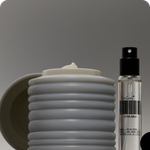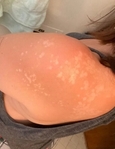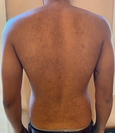What is the difference between tinea versicolor and vitiligo?
Because vitiligo and tinea versicolor often appear as white splotches, they’re often confused, though tinea can actually be a range of colors. Tinea versicolor patches can also be itchy and dry, while vitiligo isn’t.
But the underlying causes are different. Tinea versicolor is caused by an overgrowth of yeast and vitiligo is an auto-immune condition that attacks the body’s melanocytes, the skin’s pigment-producing cells. When tinea versicolor is treated with antifungal washes and ointments, the skin eventually returns to its previous tone. Skin discoloration from vitiligo is harder to treat.1 Some people try topical creams and light therapy to help recover their skin color, but some patients choose not to treat it at all. There’s still a lot of research yet to be done on vitiligo.
References:
1Vitiligo: Diagnosis and Treatment by the American Academy of Dermatology Association.
Get Updates
There’s more to come.
Sign up to receive periodical updates on Mass Index, and to be the first to know when Soft Services launches new products. (If we don’t have any updates, we won’t email you.)
Tinea Versicolor
A harmless skin rash caused by an excess of naturally occurring yeast that shows up in splotchy patches on the body.
Also Called
Pityriasis versicolor
Frequently Found On
Back, chest, butt
Related Concerns
Learn More: Tinea Versicolor

























